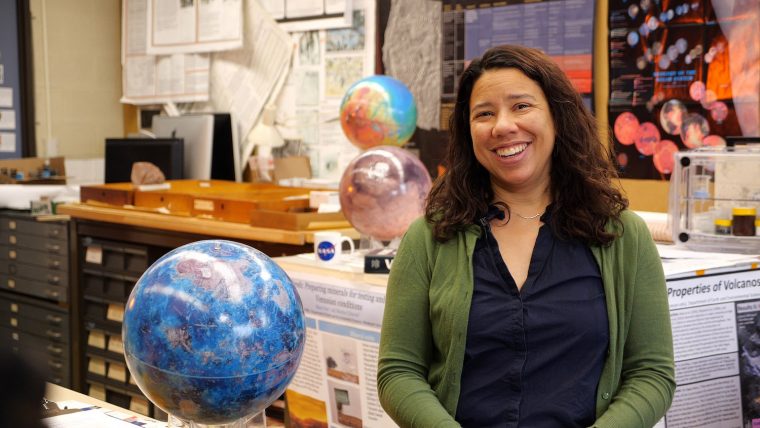Gilmore Featured in Venus Documentary


Martha Gilmore, George I. Seney Professor of Geology and professor of earth and environmental sciences, is prominently featured in a recently released suite of five documentary films about the history, science, exploration, and possible settlement of the planet Venus.
In the films, Gilmore, who is co-coordinator of planetary science at Wesleyan, along with other experts in a range of fields, help to illuminate and elucidate the fascinating history and possible future of the second planet from the sun, commonly known as Earth’s “sister planet.” The suite of films was produced by filmmaker and space exploration advocate Dave Brody P ’24. The main feature, “Venus: Death of a Planet,” the special feature, “Cloud Cities of Venus,” and the three short films of the “Exploring Venus Series,” can be viewed online through early September, and on the MagellanTV (broadly available through various streaming platforms).
In February, two spacecraft mission concepts co-developed by Gilmore to study Venus received second-round backing from NASA’s Discovery Program. Both concepts, which were awarded $3 million each, would assess whether Venus was ever a habitable planet by examining its landscape, rocks, and atmosphere.
According to filmmaker Brody, “Venus is the once and future twin of Earth. The planet has completely remade its surface by cataclysmic vulcanism – perhaps more than once. It rotates very slowly – and backwards – compared to other worlds in the solar system. There could be life there now, high in the cloudy atmosphere where temperatures and pressures are Earthlike. The cloud-shrouded planet’s hellish surface conditions help scientists calibrate climate change on Earth. Humans may someday build floating cities in Venus’ atmosphere and perhaps even terraform the entire planet.”
“There are areas on Venus that look like continents. They’re high standing, they’re kind of wrinkly. They also are the oldest rocks on Venus. Because Venus has had this weird history where much of the surface is new. So these rocks are the only rocks from the first 80 percent of the history of Venus,” explains Gilmore in “Venus: Death of a Planet.” “That’s where we want to go—that’s where I want to go—is to these areas which are called tessera terrain because of their tile-like appearance. Whatever it is that spurred the formation of life, in my mind, why wouldn’t it have happened everywhere? And that’s the record we’re looking for in the rocks of the tessera. Was there evidence of ancient environments that would support life?”

